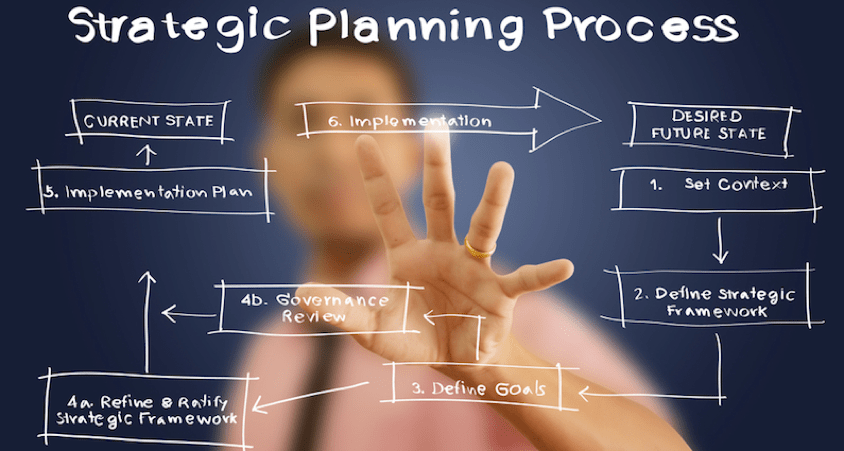Develop Information Technology Strategy | Managed IT Support

Network technology is continually changing, as are the regulatory and security issues associated with operating any enterprise system. An effective networking strategy has to extend beyond allocating the budget for system maintenance and upgrades. It must also consider how emerging technologies, such as the cloud, will affect your network and integrate into your infrastructure. To stay current with the latest technology, and lay the foundation for the future, you have to have an effective IT strategic roadmap in place, a roadmap that takes into consideration the myriad hybrid IT options in today’s market and lays out the best plan for your organization.
Without an IT strategic plan, companies often find themselves trying to “make do” with outdated technology, patching obsolete software and struggling to get one more year of service from an outdated server or application. The problem with the “waiting until it fails” approach is that any enterprise system failure tends to have a ripple effect; failure of one component or application tends to highlight other weaknesses or obsolete systems in the enterprise.
With an IT strategic plan in place you have a blueprint for maintenance and upgrades, including system interdependencies and a reasonable timeframe for system implementation. Now, rather than reacting to problems, you follow the proactive plan (your blueprint) to improve operations and support broader, corporate objectives.
Not sure how to begin developing a corporate blueprint? The OneNeck Professional Services team has a well-defined process and can help you create an effective IT strategic plan. Here are just a few of the recommended steps:
- Review strategic objectives – Before you can develop a plan you have to have goals. The objectives the IT department sets for enterprise upgrades and expansion have to align with corporate objectives. Any IT initiative needs to assess the project’s goals in light of larger objectives. By reviewing and listing IT strategic objectives at the outset, you can be sure the IT goals support corporate objectives and priorities.
- Executive agreement – Once you determine the goals for the IT strategic plan, you want to be sure those goals are sanctioned by the operational and executive staff. Soliciting senior management buy-in at the outset eliminates problems later and helps protect your budget. Rather than holding a team meeting, consider approaching the senior team individually; they will be more likely to open up and offer more candid responses. Be prepared with the facts – SWOT (strengths, weaknesses, opportunities tactics) analyses and results from the personal interviews. Executive agreement up front is key in your roadmap success.
- Create metrics – As part of the plan, you need to create metrics for objectives. As with MBOs, you want to establish measurable goals and create a timeline for achievement. You can always adjust metrics later if need be, but having a yardstick to measure progress is essential to success.
- Infrastructure assessment – Inventory your current enterprise infrastructure to determine what assets are already in place that can be used as part of the IT strategic plan. This way, you’ll have a comprehensive understanding of your enterprise components and capabilities before mapping out changes to the infrastructure.
- Gap review – Now that you have a list of agreed-upon goals and objectives and an inventory of existing systems, where are the gaps? What hardware and software are missing to help you achieve your goals? Are there system upgrades or swap-outs required? Prioritize the missing elements into “must have” and “nice to have” and then (??) assess the interdependencies within the infrastructure.
- Develop a timeline and budget – Now that you have an inventory of objectives and the technology needed to achieve those objectives you can develop a step-by-step timeline for deployment over time. Consider deploying the highest priority system(s) first and adding new hardware, software and infrastructure along the way. You also need to consider system interdependencies so you can add or upgrade technology in the right order. With the timeline in place, you can establish a budget for deployment, mapping costs to implementation goals from year to year.
Of course, the IT strategic plan won’t be static. Changes in corporate goals and objectives will impact strategic IT implementations. Other factors, such as changes in the economy and new technology could also require adjustments to your strategy. Your plan needs to be fluid to accommodate changing conditions.
To keep your IT strategic plan current, IT management has to be included in strategic corporate discussions. The vision of the company needs to be reflected and supported by the IT strategic plan. Using external resources and experts, such as OneNeck’s Professional Services (PS) team, can simplify the development of a comprehensive IT strategy plan and provide an independent perspective. The OneNeck team offers a full complement of design and implementation, IT assessment and technology consulting services. The PS team works closely with your company to understand our business and IT needs in order to develop IT strategies that maximize ROI while minimizing total cost of ownership.
If you want to stay current with the latest technology while minimizing risk, reducing delays and reducing costs, contact the OneNeck Professional Services team.
Additional Resources:




